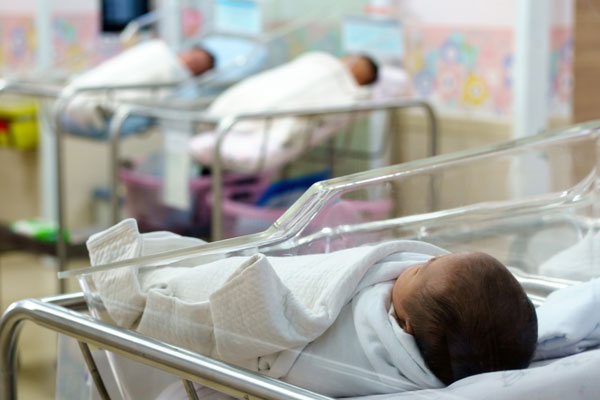Two forces: Drivers of Indiana population growth

If the state’s population dynamics remain largely unchanged over the coming decades, then the IBRC’s latest population projections show that deaths will begin to outnumber births in Indiana during the 2040s.
In many ways, it seems that Indiana — like much of the U.S. — is at a demographic watershed. One way this is most evident is in recent shifts to the drivers of population growth.
Population change is caused by two forces: migration and natural increase (or the difference between the number of births and deaths). While migration is an important component of change, natural increase has long been the dominant source of growth in Indiana.
For instance, between 1940 and 1970 — a period that includes the Baby Boom — natural increase accounted for 90% of Indiana’s growth. During the ‘70s and ‘80s, when the state experienced a strong net out-migration of residents, natural increase was our sole source of growth. Even between 2010 and 2020 — when net in-migration to Indiana was relatively strong and natural increase had fallen to its lowest level in the last 80 years — natural increase still accounted for nearly 70% of our gains.
However, the impact of natural growth on Indiana’s population change is fading rapidly. To some extent, this shift was always inevitable as the outsized Boomer generation advanced into its golden years (this cohort is between the ages of 61 and 79 in 2025). But dramatic shifts to the state’s fertility and mortality trends over the last two decades have brought births and deaths far closer to balance than would otherwise be the case (see Figure 1).
As a result, Indiana’s natural increase has been in steep decline since 2007 (see Figure 2).
Figure 3 illustrates the result of this trend. Between 2010 and 2020, Indiana had an average natural increase of roughly 20,740 residents per year, down from an average annual mark of 31,840 during the 2000s — a 35% decline.
So far this decade, the state has had a natural growth of just 4,380 residents per year. Of course, this period includes a pandemic and an escalation in the state’s drug overdose crisis. Even by 2024, however, with COVID-19 no longer among the state’s leading causes of death and overdose mortality down 47% from the 2021 peak, Indiana had a natural increase of only 10,640 residents, or roughly half as large as our average annual natural growth last decade.
If the state’s population dynamics remain largely unchanged over the coming decades, then the IBRC’s latest population projections show that deaths will begin to outnumber births in Indiana during the 2040s. That means that over a 20- to 30-year stretch, natural increase will shift from Indiana’s dominant source of population growth to a drag on it.
With natural growth on the wane, the importance of attracting new residents to Indiana is magnified greatly. As Figure 3 shows, with an average net inflow of 29,200 residents per year between 2020 and 2024, the state’s level of net in-migration so far this decade is far higher than at any time over the past 85 years.
As a result, Indiana has maintained a healthy level of population growth despite the sharp decline in natural increase (see Figure 4). However, given that a post-pandemic immigration boom accounted for two-thirds of Indiana’s growth between 2020 and 2024, gains of this magnitude are almost certainly unsustainable, and the state will likely see much slower population growth in the years ahead.
Data visualization
Use the following interactive dashboard to explore the drivers of population change since 1940 for all Indiana counties. Note: Annual birth and death counts at the county level are only available through 2023.
Data notes
- The Indiana birth and death counts for 2024 in Figure 1 are provisional values from the U.S. Centers for Disease Control and Prevention (data accessed on 5/29/2025). At the county level, 2023 numbers are the most current available.
- The annual data on natural increase shown in Figure 2 and in the data visualization are derived from annual birth and death counts from the Indiana Department of Health and the U.S. Centers for Disease Control and Prevention. The average annual natural increase between 2020 and 2024 shown in Figure 3 and in the data visualization are from the U.S. Census Bureau’s 2024 population estimates.
- The average annual net migration estimates for each decade between the 1940s and the 2010s are derived through a residual method (i.e., the difference between the population change and the natural increase over any given decade is assumed to be the net migration for that decade). The average annual net migration values between 2020 and 2024 are from the U.S. Census Bureau’s 2024 population estimates.
